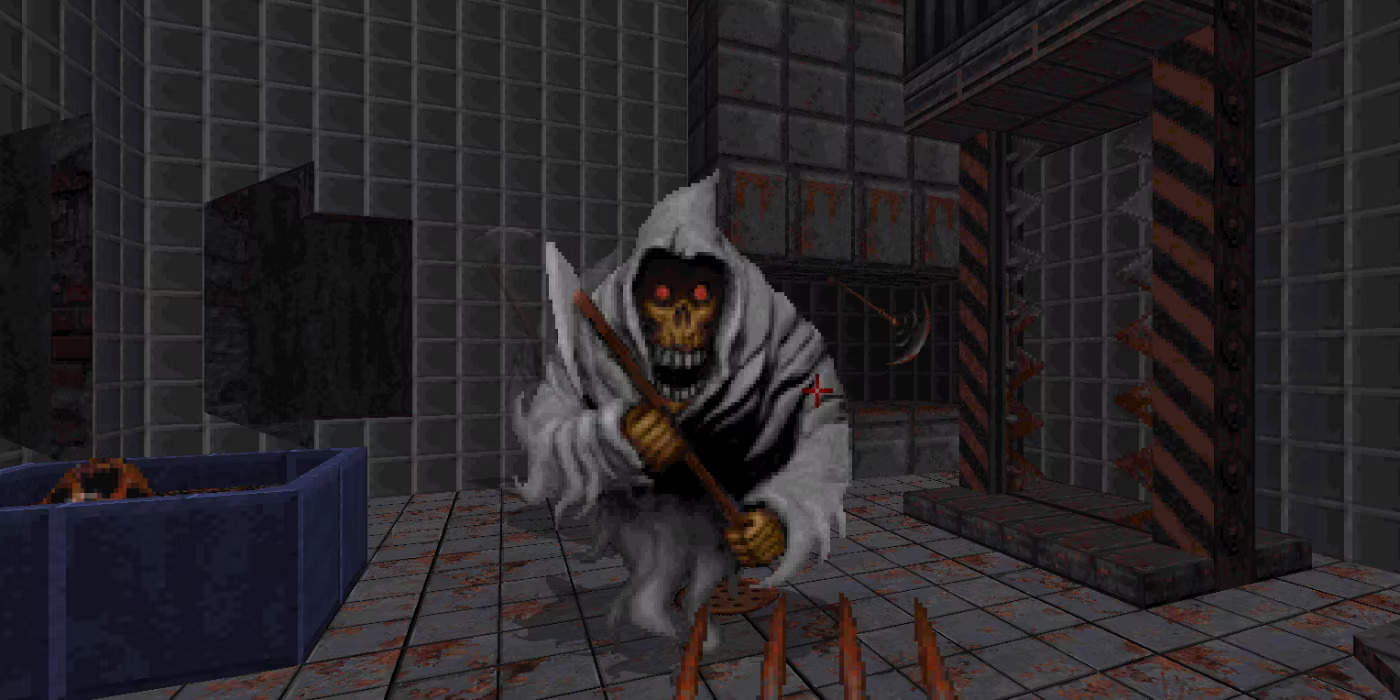The first-person shooter genre has come a long way since its origins in the late 1980s and early 1990s. That said, the legendary nature of the initial wave of popular first-person shooters makes several of the genre’s classics continue to endure into the modern era. And while there are plenty of games from the decade that rank as some of the “best” first-person shooters and transcend the genre to become important games in their own right (such as Half-Life and System Shock), there are those games that stick in the minds of players for just how over-the-top and entertaining they are. The most insane first-person shooters of the 1990s straddle this line, presenting some of the more ridiculous games in the genre that occasionally dabble with greatness.
Though not the original first-person shooter, id Software’s success with Wolfenstein 3D and reinvention of the genre would eventually pave the way for one of the most notorious and important games in the history of the medium — Doom. Subsequently, Doom‘s runaway success would result in other developers using the game’s creation tools (the GZ Doom software developed from the original id Tech 1 engine) and building out their own proprietary game engines that would provide the template for even more games. Several of the games on this list used to be classified as “Doom clones”, but the subtle brilliance of the Build Engine would eventually give birth to both a run of incredible and unique FPS games and help popularize their mechanics in the modern “Boomer Shooter.”
10. Turok 2: Seeds of Evil
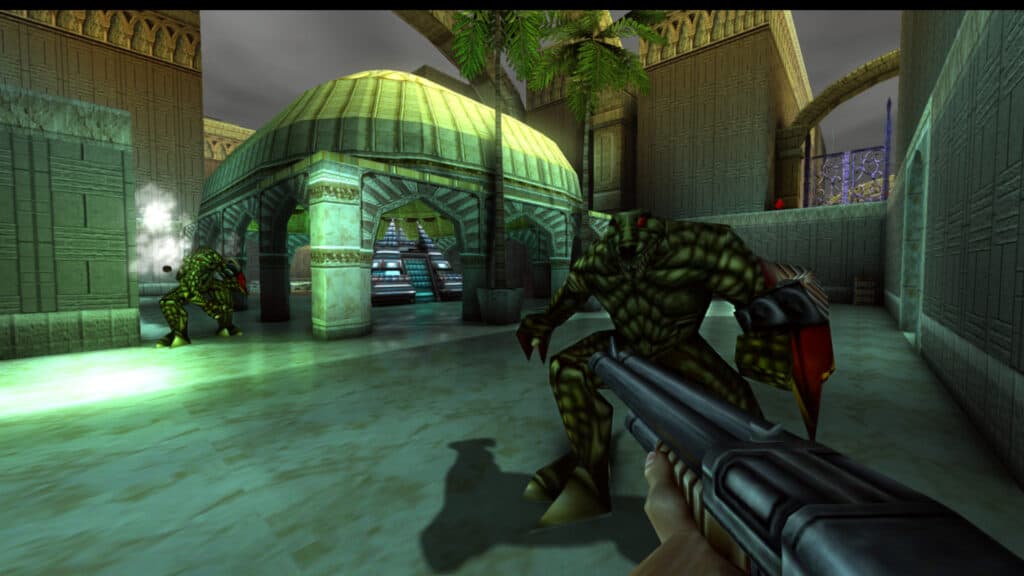
- Release Date — December 10, 1998
- Release Platforms — Nintendo 64
- Metacritic Score — 86% (Generally Favorable)
Though it would eventually receive ports to Windows PCs and a later remaster on modern hardware courtesy of Nightdive Studios, the original Turok 2: Seeds of Evil on Nintendo 64 is the version that most players are familiar with. Taking the template that the first Turok established and running with it, Turok 2 is a massive leap in quality in just about every aspect. Not only is the single-player campaign better, with more intricate level design and a wider variety of enemies, but the local multiplayer places it right alongside the likes of GoldenEye 007 and Perfect Dark as an essential N64 FPS. Though Turok 2 is great, it primarily earns a place on this list thanks to the notorious Cerebral Bore weapon. Just mentioning the weapon’s name is enough to send a chill down the spine of anyone familiar with Turok 2.
9. Quake III Arena
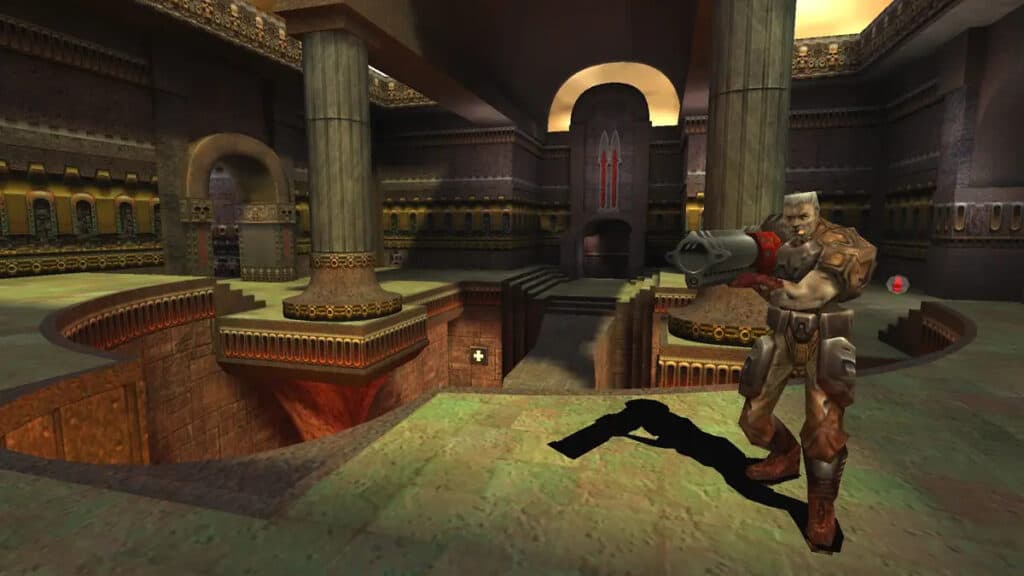
- Release Date — December 2, 1999
- Release Platforms — PC, Dreamcast
- Metacritic Score — 93% (Universal Acclaim)
The Quake series originally existed as an excellent follow-up to Doom and an early highlight of the potential of online multiplayer. Still, the first two Quake games include a single-player campaign with its own story and lore to accompany the multiplayer deathmatch modes. Not so with Quake III Arena, which abandons any semblance of a single-player campaign in favor of focusing on turning the title into a fast-paced multiplayer arena shooter. Arena shooters were becoming quite popular in the late 90s thanks to titles like Quake III and Unreal Tournament, but what sets Quake III apart from the rest of the pack are its incredibly deep strategic options when it comes to movement. Advanced techniques like “Rocket Jumping” and “Strafe Jumping” originate in Quake III Arena, and the high-level competitive play of the title is still one of the bars multiplayer shooters strive for.
8. Aliens Versus Predator
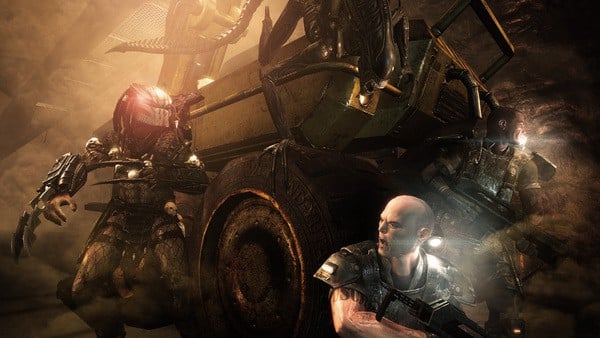
- Release Date — May 13, 1999
- Release Platforms — PC
- Metacritic Score — 84% (Generally Favorable)
Aliens Versus Predator (not to be confused with the 2010 Aliens vs Predator) goes above and beyond most other first-person shooters of the era to give players 3 distinct campaigns that blend first-person shooting with stealth and immersive sim gameplay. Getting to play as either the Predator, the Xenomorph, or the Colonial Marines is a smart choice that makes each campaign wholly unique, and the game is balanced as to have each of the three different playable races have their own strengths and weaknesses that the other can exploit or take advantage of. The highlight is undoubtedly playing as the Predator, which ends up being an absurd power fantasy thanks to its infamous cloaking device, homing rockets, and nigh-impervious skin. Aliens Versus Predator isn’t just one great game, it’s practically three great games in one.
7. Powerslave
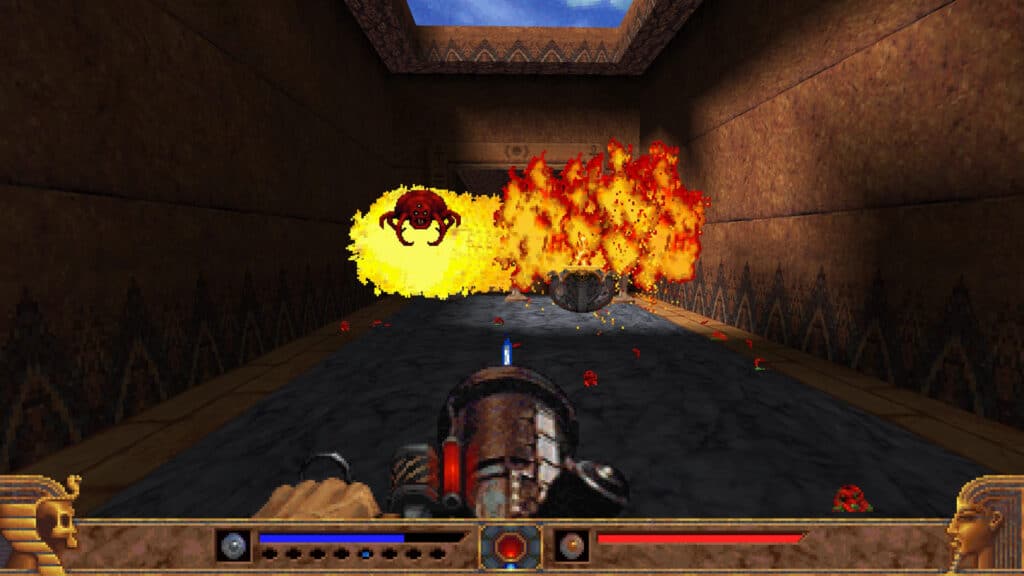
- Release Date — December 31, 1996
- Release Platforms — PC, Sega Saturn
- Metacritic Score — 67% (Mixed or Average)
One of the more unique titles of the era is the excellent Powerslave. Developed in the infamous Build Engine created by 3D Realms for Duke Nukem 3D, Powerslave places players in a wholly unique ancient Egyptian setting and gives them both firearms and magical powers to use against enemies. Further, the title mixes in RPG-style progression and Metroidvania elements, an early first for the FPS genre. Both the PC and the home console releases on the Sega Saturn are remembered fondly by players for the game’s insane enemy designs and off-the-wall story and setting, and it’s somehow still singular among FPS games in the modern era. The remaster of the title by Nightdive Studios (Powerslave Exhumed) is yet another love letter to the golden era of FPS gaming.
6. Hexen: Beyond Heretic
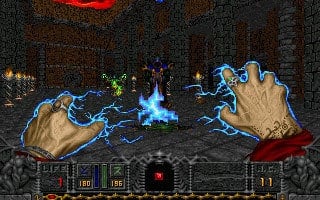
- Release Date — October 30, 1995
- Release Platforms — PC (MS-DOS)
- Metacritic Score — 81% (Generally Favorable)
Hexen is unique among some of the more insane first-person shooter games from the 90s thanks to its distinction of being published by id Software. Thanks to id handling publishing duties, developer Raven Software was able to use the proprietary Doom Engine to craft one of the more unique and compelling first-person shooter games of the era. Hexen continues in the tradition of its predecessor Heretic by placing players in control of one of three RPG class archetypes, each with their own abilities and weapons. Playing as a Fighter is totally different from playing as a Mage, and the ability to use swords and axes (or magic) instead of shotguns makes Hexen one of the standout games of the decade. And, like Powerslave before it and Turok after it, Hexen allows players a little bit of RPG-style progression and backtracking to previous levels to uncover secrets.
5. Duke Nukem 3D
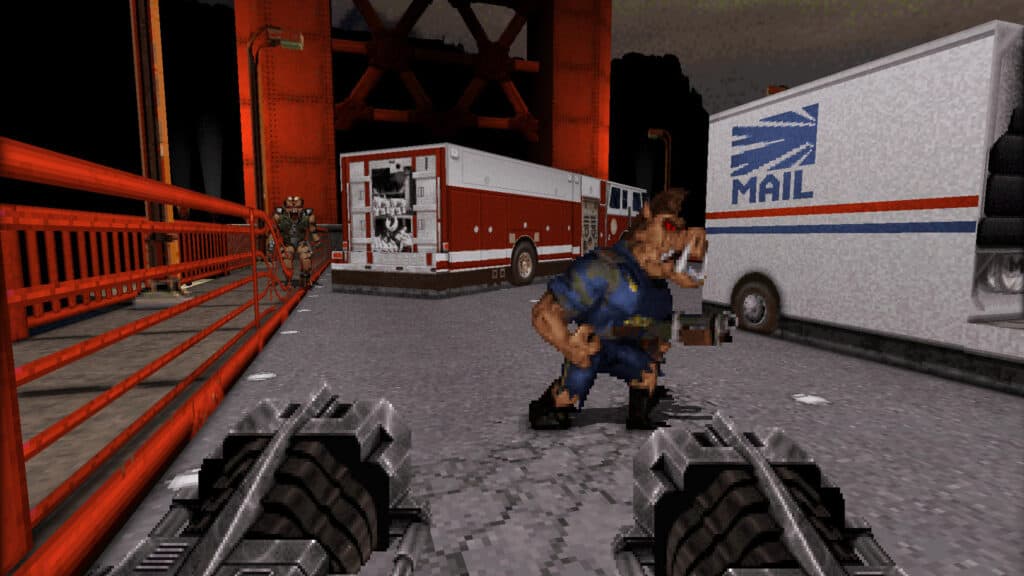
- Release Date — January 29, 1996
- Release Platforms — PC
- Metacritic Score — 89% (Generally Favorable)
In terms of “over-the-top” first-person shooters from the 1990s, it doesn’t get more bombastic than Duke Nukem 3D. Duke had been the star of his own side-scrolling action platformers prior to Duke Nukem 3D, but the character’s initial first-person shooter game takes on a legendary status all its own and makes Duke a household name. Duke Nukem 3D is practically the anti-Doom despite sharing so much in common with the game and owing it a debt of gratitude. Unlike Doom, Duke Nukem 3D is bursting with inappropriate humor, crude jokes, and a willingness to not take itself too seriously. It ends up being a great and memorable game for precisely those reasons, with some of the most iconic left-field weapons in the genre (like the Shrink Ray) and a slew of unforgettable one-liners courtesy of Duke’s voice-actor Jon St. John.
4. Shadow Warrior
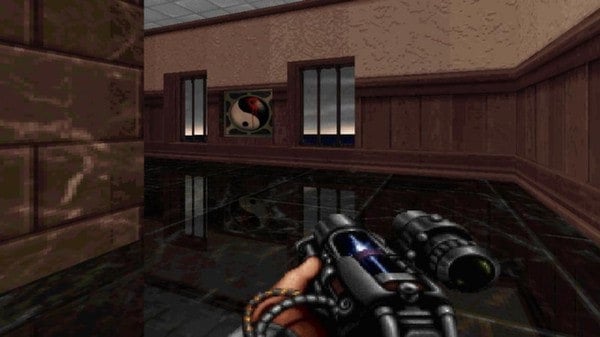
- Release Date — May 13, 1997
- Release Platforms — PC (MS-DOS)
- Metacritic Score — 84% (Generally Favorable)
Though the Shadow Warrior series continues today in its rebooted modern format, the original Shadow Warrior is yet another classic FPS title originating in the Build Engine. In Shadow Warrior, players take on the role of bodyguard Lo Wang on his quest to get revenge against his former employer. Unlike some of the other games using the Build Engine, Shadow Warrior is an official 3D Realms release and shares a lot in common with Duke Nukem 3D in terms of its over-the-top gore and humor. Unique to Shadow Warrior, though, is the ability to use a katana to dispatch foes. Additionally, Shadow Warrior is one of the first FPS games to introduce a heavy emphasis on puzzle-solving before being able to progress through levels (rather than just locating keys) and also includes innovations like climbing ladders and driving vehicles.
3. Rise of the Triad
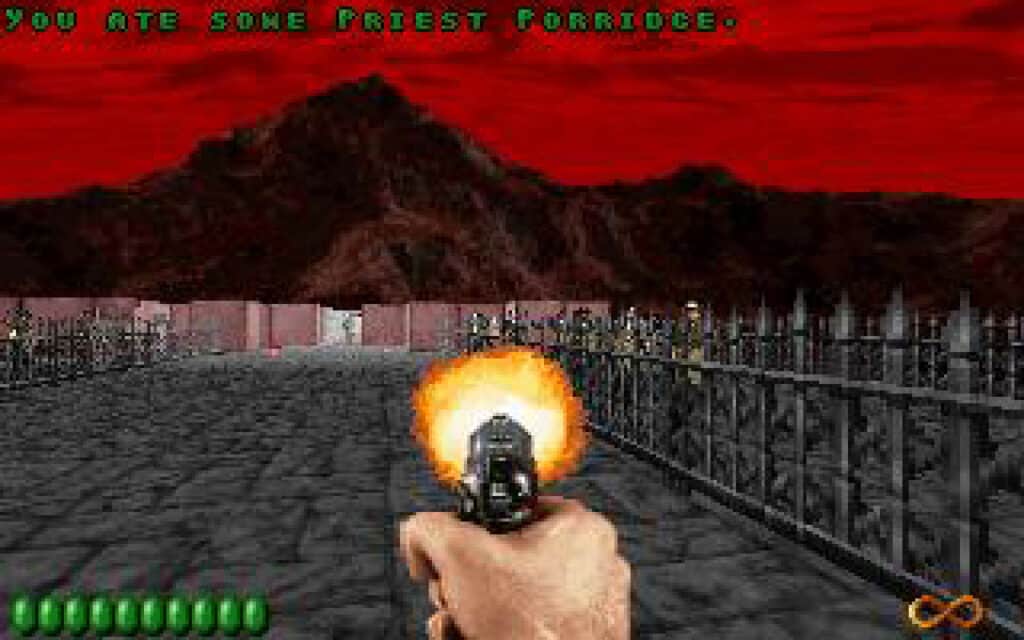
- Release Date — February 17, 1995
- Release Platforms — PC (MS-DOS)
- Metacritic Score — 74% (Mixed or Average)
While it might be a bit of a stretch to claim Rise of the Triad as one of the “best” shooters of the 90s, it’s certainly one of the more ridiculous. Rise of the Triad is unique among shooters of the era in that it’s one of the few games to be built using a newer iteration of the original Wolfenstein 3D engine, resulting in it having a different look from games using the id Tech 1 or Build Engines. There are 5 characters to choose from, each with distinct stats in terms of their HP, speed, and accuracy, and the game includes a random “Ludicrous Gibs!” bonus in which enemies explode in a comical amount of gore upon defeat. One of the unique elements of the title is its use of verticality, with jump pads littering each level and launching the player far above enemies to a hilarious effect.
2. Blood
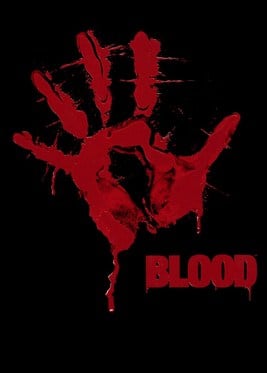
©Blood logo
- Release Date — March 7, 1997
- Release Platforms — PC (MS-DOS)
- Metacritic Score — 82% (Generally Favorable)
The modern-day renaissance of the “Boomer Shooter” (a reference to the sound and feel of the classic Shotgun and Super Shotgun from Doom and Doom II) sees new developers pull influence from a host of now-legendary FPS titles. In terms of which games have the greatest influence on newer shooters with a retro aesthetic, the most obvious answer is Doom, but the lesser-known contributions come from the incredible Blood. Blood mixes the gore and challenge of Doom and its “monster closets” with the unique weaponry of Rise of the Triad and Shadow Warrior and the unique fantasy/horror-tinged setting of Hexen. The result is a shooter unlike anything else at the time, and playing modern-day classics like Dusk, Cultic, and Amid Evil makes it all the more apparent how important Blood is to the evolution of the FPS genre.
1. Doom
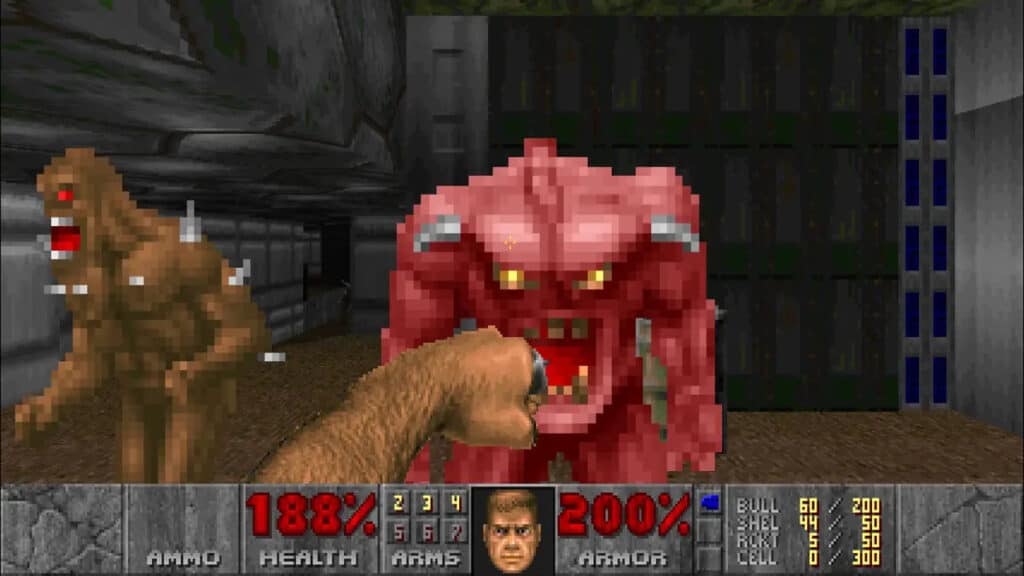
- Release Date — December 10, 1993
- Release Platforms — PC (MS-DOS)
- Metacritic Score — 83% (Generally Favorable)
Doom is one of the rare games of the 1990s that hits all the marks of a legendary title. Simultaneously one of the best, most important, and most insane FPS games of the era, there’s still nothing quite like Doom despite the fact that there are dozens upon dozens of games that have tried. id Software’s iconic and revolutionary reinvention of the FPS genre includes all the trademarks that would come to define it in the future. In addition to its over-the-top gore and emphasis on speed, Doom introduces the concept of the “monster closet” — points in the map in which the player’s entry triggers a nigh-unstoppable horde of enemies. Simply surviving Doom on higher difficulties is one of the greatest challenges in any FPS, and that the game is so ubiquitous with first-person shooters, in general, is a testament to its place on the Mount Rushmore of gaming.
The image featured at the top of this post is ©Blood gameplay screenshot.
